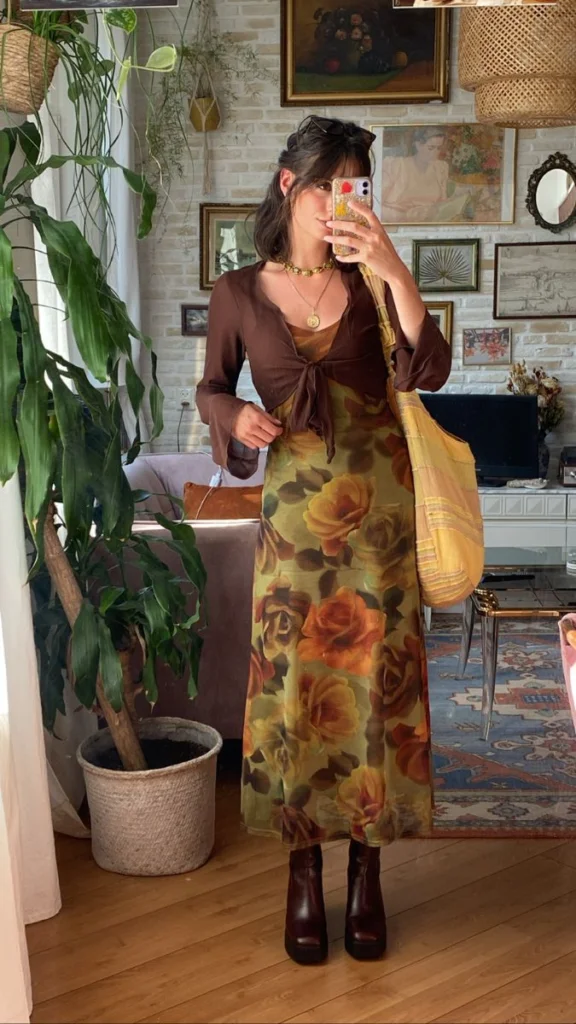
Most likely, you have walked through thrift stores wondering why some people appear to locate remarkable designer items while you depart without any acquisitions. The reality is, effective thrifting is not a matter of chance—it involves strategy. From precisely timing your visits to understanding which neighborhoods conceal the finest treasures, there are specific techniques that distinguish casual browsers from dedicated thrift hunters. These 32 validated approaches will transform your subsequent shopping excursion into a bounty of discoveries.
Shop on Weekdays for Better Selection and Deals
While weekend thrift stores buzz with crowds and picked-over racks, weekdays offer you a goldmine of untouched treasures. You’ll discover the best selection when you shop Monday through Wednesday, giving you first dibs on freshly donated items.
Early weekdays are your secret weapon for scoring premium finds at rock-bottom prices. Store employees typically restock and price new inventory overnight, so you’re seeing fresh merchandise before anyone else gets their hands on it. You’ll have more space to browse comfortably and actually examine items properly.
Take advantage of extended shopping hours during weekdays too. Many thrift stores stay open later Monday through Thursday, giving you flexibility to hunt after work. You’ll avoid the weekend rush and have staff available to help you locate specific items or negotiate bulk deals.
With the second-hand market booming and expected to reach $77 billion by 2025, weekday shopping positions you ahead of the growing crowd of thrift enthusiasts competing for the same quality pieces.
Visit Wealthy Neighborhoods for Higher Quality Items
Location makes all the difference when you’re hunting for premium thrift finds. You’ll discover that wealthy neighborhoods consistently offer superior quality items at thrift stores and charity shops. When you explore affluent neighborhoods, you’re tapping into donation streams from households with higher-end possessions.
Consider donation quality as your guiding principle. Residents in upscale areas typically donate designer clothing, luxury home goods, and well-maintained electronics. These items often show minimal wear and represent brands you’d pay full price for elsewhere.
Plan weekend trips to thrift stores in neighborhoods with expensive homes. You’ll find better fabrics, craftsmanship, and brand names. Don’t overlook estate sales in these areas either – they’re goldmines for authentic vintage pieces and high-quality furniture at fraction of retail costs. If you’re considering turning your thrifting hobby into a profitable venture, developing a solid business plan will help you identify your target market, set pricing strategies, and establish financial projections for your resale business.
Check Items Thoroughly for Damage Before Purchasing

How often have you brought home a thrift store treasure only to discover hidden flaws later? Don’t let damaged goods derail your thrifting success! Taking control means becoming a detective before you buy.
Here’s your power inspection checklist:
- Check clothing seams and zippers – Look for loose threads, missing buttons, and broken hardware that’ll cost you later
- Inspect internal components on electronics – Test buttons, check battery compartments, and examine cord connections for wear
- Examine furniture joints and hardware – Wobble chairs, open drawers completely, and check for structural damage
You’ll save money and frustration by catching problems early. Check for hidden defects like stains under collars or inside pockets. Spend those extra two minutes examining each item thoroughly – your wallet will thank you when you avoid costly repair bills! Just like tracking your steps requires honest assessment of your starting point, successful thrifting demands truthful evaluation of each item’s condition before purchase.
Learn to Identify Quality Fabrics and Materials
Five seconds of fabric knowledge can transform your thrifting game from hit-or-miss to consistently finding quality pieces! Touch fabrics before you buy them. Natural fibers like wool, cotton, and linen feel substantial and breathe well. They’re worth your money because they last longer than synthetic blends.
Check fabric quality by feeling the weight and texture. Heavy, tightly woven materials signal better construction and material durability. Avoid items that feel flimsy or have a plastic-like texture. Look for designer labels on wool coats and silk scarves—you’ll often find $200 pieces for under $15!
Run your fingers along seams to test strength. Quality fabrics don’t pill easily or lose their shape after washing. You’re building a wardrobe that’ll serve you for years, not months. Just like protecting hair from environmental stressors, quality fabrics shield you from wear and weather while maintaining their appearance over time.
Bring a Measuring Tape for Furniture and Clothing
Why do so many thrift store finds end up as expensive mistakes sitting in your closet or garage? You didn’t measure before buying! A simple measuring tape transforms you from hopeful shopper to strategic buyer who scores perfect fits every time.
Smart thrifters never leave home without this essential tool:
- Check size availability by measuring garments against your body measurements before heading to checkout
- Use fitting room to test fit whenever possible, but rely on your tape when lines are long
- Measure furniture dimensions and compare them to your space requirements using your phone’s notes app
You’ll avoid costly returns and storage headaches while maximizing your thrifting budget. That $15 dresser becomes a $150 value when it fits perfectly in your bedroom! Just like conducting a time audit helps you track where every minute goes, measuring every potential purchase helps you track where every dollar should go.
Download Store Apps for Exclusive Discounts and Alerts
While measuring guarantees your thrift finds fit perfectly, smart shopping goes beyond the fitting room. You’ll maximize savings by downloading store apps from your favorite thrift chains. These apps deliver exclusive discounts directly to your phone, often offering 20-30% off regular prices during special promotions.
Set up push notifications to receive instant alerts about flash sales and new inventory drops. You’ll get first access to premium items before other shoppers arrive. Most apps feature digital loyalty programs that reward frequent visits with additional discounts and early shopping privileges.
Make it your routine to check weekly app updates for seasonal promotions and clearance events. Before downloading any app, review app user reviews to verify the platform functions smoothly and delivers promised benefits. Consider using app automation tools to streamline notifications from multiple thrift store apps, ensuring you never miss a deal across your favorite shopping platforms. Smart thrifters use technology to their advantage!
Build Relationships With Store Staff and Managers
Building genuine connections with thrift store employees can transform your shopping experience from ordinary to extraordinary. These relationships unveil insider knowledge and exclusive opportunities that casual shoppers miss. Understanding staff roles helps you approach the right people for specific needs.
Strong relationships with thrift store staff unlock hidden treasures and insider deals that transform casual browsing into strategic shopping success.
Building store relationships requires consistent effort and authentic interest in the people who work there. Here’s how to develop these valuable connections:
- Learn names and personal details – Recollect birthdays, ask about family, and show genuine care about their lives beyond work.
- Offer small gestures of appreciation – Bring coffee, share homemade treats, or simply express gratitude for their help and expertise.
- Respect their time and expertise – Don’t monopolize busy periods, listen to their advice, and acknowledge their product knowledge.
These relationships often lead to early notifications about special items and better prices. Being a regular at your local thrift stores creates natural opportunities for friendship to bloom organically through the mere exposure effect that builds familiarity with staff over repeated visits.
Know the Best Times of Year for Seasonal Items

Timing your thrift store visits around seasonal cycles can dramatically increase your chances of finding quality items at rock-bottom prices. You’ll discover winter coats for $5-10 in March when stores clear inventory for spring merchandise. Holiday decorations hit shelves at 70% off in January, and summer clothes appear cheapest in September.
Smart thrifters know that seasonal clearance sales happen predictably. Visit stores during changeover months when retailers dump previous season stock. February brings Valentine’s décor deals, while August offers back-to-school bargains on children’s clothes.
Don’t overlook hidden seasonal inventory that arrives unexpectedly. Store managers often receive donations after holidays when people declutter. You’ll find Easter items in May and Halloween costumes in December. Stay alert and visit frequently during these transitional periods for maximum savings! Many thrift shoppers also donate household items during spring cleaning seasons, creating opportunities to find home goods and organization supplies at bargain prices.
Research Brand Names and Designer Labels Beforehand
Beyond timing your visits perfectly, you’ll want to arm yourself with knowledge about valuable brands before stepping foot in any thrift store. Smart thrifters research designer labels and luxury brands to spot hidden treasures others might miss. When you can quickly evaluate authentic designer pieces, you’ll gain a serious advantage over casual shoppers.
Here’s your power strategy for brand research:
- Study luxury fashion houses – Learn logos, stitching patterns, and hardware details for brands like Coach, Louis Vuitton, and Prada
- Download authentication apps – Use tools like Legit Check or Real Authentication to verify designer items on the spot
- Know quality indicators – Research fabric composition, construction methods, and serial number locations to determine item condition accurately
This preparation transforms you from browser to serious treasure hunter with real purchasing power. Your sharp focus and enhanced problem-solving abilities will help you process information faster and connect the dots between authentic pieces and valuable finds, much like those who radiate yellow aura energy when making complex decisions.
Inspect Electronics and Test Them When Possible
When you spot electronics at thrift stores, you’re looking at potential goldmine finds that could save you hundreds of dollars. Don’t let a broken device slip past your keen eye though. You’ve got the power to separate working treasures from expensive paperweights.
First, inspect power cords thoroughly for fraying, cuts, or exposed wires. These safety hazards aren’t worth any savings. Next, test batteries in portable devices by powering them on and checking all functions. Bring your own batteries if needed – many stores allow testing.
For larger items like stereos or gaming systems, ask staff to plug them in. Listen for unusual sounds, check all buttons, and verify outputs work properly. You’re building wealth through smart purchases, so take those extra minutes to guarantee you’re getting functional electronics that’ll serve you well.
Consider bringing noise-canceling headphones to test audio quality and block out store distractions while evaluating your potential purchases.
Look Beyond the Obvious Sections for Hidden Gems
While most shoppers stick to familiar sections like clothing and books, you’re missing incredible deals by staying in your comfort zone. Smart thrifters know that real treasures hide in overlooked areas where competition is minimal and prices stay low.
The best thrift finds await beyond clothing racks—venture into forgotten corners where savvy shoppers discover unbeatable treasures.
When you search unique displays near checkout counters or back corners, you’ll discover forgotten merchandise that others walked past. Don’t limit yourself to traditional departments—explore unconventional sections like sporting goods, kitchen supplies, and seasonal items for unexpected finds.
Here’s where to hunt for hidden gems:
- Hardware sections – Find vintage tools, craft supplies, and unique decorative items
- Holiday decorations year-round – Score beautiful vases, candles, and seasonal pieces for pennies
- Behind furniture displays – Uncover small electronics, books, and collectibles tucked away
You’ve got the power to outsmart other shoppers!
Bring Cash for Better Negotiation Power
Cash gives you serious bargaining power that credit cards and digital payments simply can’t match. When you pull out actual bills, sellers immediately know you’re ready to close the deal. You’ll command respect and often secure better prices than other shoppers fumbling with cards.
Smart thrifters carry small bills like fives, tens, and twenties for easier negotiations. If you don’t have cash on hand, hit up prepaid debit cards from your bank or grocery store beforehand. For international thrift adventures, visit a local currency exchange to get the right denominations.
Cash transactions also speed up your shopping experience. You’ll skip long checkout lines and avoid card processing delays. Plus, many small thrift shops offer cash-only discounts that can save you 10-15% instantly!
Dress Comfortably for Long Browsing Sessions
Why suffer through hours of thrifting in uncomfortable clothes when the right outfit can make or break your shopping success? You’ll move faster, feel better, and stay focused on finding those amazing deals.
Smart thrifters know that comfort equals power in the aisles. When you’re dressed right, you’ll outlast other shoppers and snag the best items.
Here’s your winning wardrobe strategy:
- Wear sturdy shoes with good support – you’ll walk miles browsing through racks and bins
- Carry a small tote bag for hands-free shopping while you examine potential purchases
- Choose layered clothing you can easily remove when trying items on over your outfit
Skip restrictive jeans and heels. Instead, choose stretchy pants and comfortable tops. You’re building your thrifting empire, so dress like the savvy shopper you are!
Check for Color-Coded Tag Sales and Discount Days

How often have you walked into a thrift store only to discover you missed their biggest sale by just one day? You can take control of this situation and maximize your savings potential.
Most thrift stores operate color-coded tag systems that rotate weekly or monthly discounts. Research store policies before you shop to understand their discount schedule. Call ahead or check their website for current promotions.
When you arrive, identify color coded tag meanings by looking for posted signs near the entrance or asking staff members. Red tags might be 50% off this week, while blue tags could be discounted next week. Some stores offer senior discounts on specific days or student discounts with valid ID. Mark your calendar with these dates and plan your shopping trips accordingly for maximum savings power.
Focus on Timeless Pieces Over Trendy Items
While fast fashion trends come and go within months, timeless pieces you find at thrift stores can serve your wardrobe for decades. You’ll build a powerful, sophisticated closet when you focus on quality over quantity instead of chasing fleeting fads.
Smart thrifters avoid trendy seasonal items that’ll look dated next year. Instead, you’ll want to hunt for these investment pieces:
- Classic blazers and wool coats – Well-tailored outerwear never goes out of style
- Premium denim and leather goods – Quality materials that improve with age
- Little black dresses and button-down shirts – Versatile basics that work for any occasion
You’re making strategic choices that’ll save money and elevate your style. That $5 cashmere sweater will outlast twenty $15 trendy tops! Focus on pieces you’ll confidently wear for years.
Learn Basic Alteration and Repair Skills
Basic sewing skills can transform your thrift shopping experience from good finds into perfect fits. You’ll access incredible value when you can tackle simple DIY clothing alterations yourself. Hemming pants, taking in waists, and shortening sleeves are straightforward skills that save you $15-30 per garment at tailors.
Start with basic hand-stitching techniques like hemming and button replacement. YouTube tutorials make learning these skills accessible and free. Once you’re comfortable, consider investing in a basic sewing machine for $80-150. Regular sewing machine maintenance keeps your equipment running smoothly for years.
You’ll discover that slightly oversized vintage pieces become perfectly tailored treasures. Minor repairs like fixing loose seams or replacing zippers considerably extend garments’ lifespans. These skills give you confidence to buy quality pieces that need minor adjustments, expanding your thrifting possibilities immensely.
Set a Budget Before You Enter the Store
Since thrift stores can feel like treasure hunts where everything seems like a bargain, you’ll easily overspend without a clear plan. Taking control of your finances starts before you walk through those doors. When you create a thrifting budget plan, you’re positioning yourself to make smart decisions while still enjoying the hunt.
Here’s how to set personal shopping goals that work:
- Decide your spending limit – Choose a realistic amount like $20-50 that won’t stress your finances
- Bring only cash – Leave cards at home to enforce your boundary and avoid temptation
- List specific items you need – Focus on gaps in your wardrobe rather than impulse purchases
You’ll shop with confidence and purpose when you’ve established these boundaries beforehand.
Take Photos to Compare Prices With Online Retailers
Even though that vintage leather jacket looks amazing, you might find the same piece selling for less on eBay or Poshmark. Smart thrifters compare prices at brick and mortar thrift stores with online markets before making purchases. This simple strategy puts you in control of your spending!
Use mobile apps to research item values instantly. Apps like Mercari and Depop let you search by brand and condition. Take clear photos of price tags and product details while you’re browsing. You’ll spot overpriced items quickly and identify genuine bargains.
Don’t feel pressured to buy immediately. Most thrift stores restock regularly, so similar items appear frequently. When you find authentic designer pieces priced below online rates, that’s your cue to act. This approach maximizes your purchasing power and guarantees every dollar counts.
Visit Multiple Locations of the Same Chain Store
After you’ve mastered price comparison techniques, expand your thrifting territory by checking out different locations within the same chain. Each store carries unique inventory based on local donations, giving you access to completely different treasures. You’ll discover that affluent neighborhoods often yield higher-end brands, while college towns offer trendy pieces.
Strategic approaches for maximizing your chain store visits:
- Compare store inventory by visiting 3-4 locations within a 20-mile radius during your shopping trips
- Track store restock schedules by asking employees when new donations typically arrive on shelves
- Map out efficient routes that let you hit multiple stores in one afternoon without backtracking
This systematic approach transforms you from a casual browser into a strategic thrifter. You’ll uncover the best-kept secrets of each location and enormously increase your chances of scoring amazing deals!
Check Items for Missing Parts or Accessories
One critical mistake can turn your amazing thrift find into a costly disappointment – buying incomplete items. You’ve got the power to avoid this trap by developing sharp inspection skills that’ll save you money and frustration.
Always examine items carefully before you commit to purchasing. That vintage board game might be missing indispensable pieces, or the coffee maker could lack its carafe. Take control by checking every component systematically. Open boxes, peek inside bags, and test moving parts when possible.
Don’t forget to inspect for any defects like cracks, chips, or broken mechanisms. You’re building expertise with each shopping trip! Ask store employees if they’ve seen missing accessories – sometimes they’re stored separately. This thorough approach transforms you into a savvy thrift shopper who consistently scores complete, functional treasures.
Know When to Walk Away From Overpriced Items
While thrift stores offer incredible deals, you’ll sometimes encounter items with inflated price tags that defeat the purpose of secondhand shopping. Spotting overpriced items becomes vital for protecting your budget and maximizing your thrifting success.
Master these strategies for walking away from deals that don’t serve you:
- Compare retail prices – If a used item costs 80% or more of its new retail price, skip it and find better options elsewhere.
- Trust your gut instincts – When something feels too expensive for secondhand, it probably is. Don’t let emotions override your practical judgment.
- Set firm spending limits – Decide your maximum budget before entering the store, then stick to those boundaries no matter what tempting items you discover.
You control your thrifting destiny by making smart financial choices!
Understand Return Policies Before Making Big Purchases
Before you invest in expensive thrift finds like furniture or electronics, you need to understand each store’s return policy completely. Don’t assume all thrift shops offer returns – many operate with strict “all sales final” policies that could cost you hundreds.
Smart thrifters always ask about return windows before spending over $50. Some stores give you seven days, while others won’t take anything back. When you understand return policies for electronics, you’re protecting yourself from buying broken items that looked functional in-store.
Take time to research retailer’s reputation for secondhand purchases too. Check online reviews and ask other customers about their experiences. Chain thrift stores typically offer more flexible return options than independent shops. Knowledge gives you negotiating power and prevents costly mistakes!
Sanitize and Clean Items Properly After Purchase

Getting your thrift treasures home is just the first step – proper sanitizing protects your family’s health and extends your items’ lifespan. You’ve scored amazing deals, but now you need to disinfect items thoroughly before using them.
Smart thrifting doesn’t end at checkout – thorough sanitizing transforms your bargain finds into safe, fresh treasures for your family.
Smart thrifters follow CDC cleaning guidelines to eliminate germs and odors effectively. Here’s your post-shopping action plan:
- Wash all clothing and textiles in hot water with detergent, adding white vinegar for extra deodorizing power.
- Wipe down hard surfaces like furniture, dishes, and electronics with disinfectant wipes or rubbing alcohol solutions.
- Air out items outdoors for several hours when possible, letting fresh air naturally eliminate musty smells.
You’re taking control of your purchases by cleaning them properly. This simple step transforms secondhand finds into fresh, safe additions to your home!
Look for Items That Can Be Repurposed or Upcycled
Since creativity transforms ordinary thrift finds into extraordinary treasures, you’ll discover incredible potential in items others might overlook. Look for furniture that can be refinished—old dressers, chairs, and tables often need just paint or new hardware to shine again. You can transform a $15 wooden nightstand into a $100 statement piece with some sanding and fresh color.
Identify household items with repurposing potential beyond their original function. Mason jars become stylish organizers, vintage suitcases turn into unique storage, and old ladders make excellent bookshelves. Even worn clothing offers fabric for crafting projects.
Train your eye to see possibilities rather than flaws. That scratched picture frame could showcase your art beautifully after refinishing. You’re not just buying items—you’re investing in creative projects that’ll save money while expressing your personal style perfectly.
Pay Attention to Store Restocking Schedules
Most thrift stores receive fresh donations on specific days, and timing your visits around these schedules can dramatically improve your finds. You’ll gain a serious advantage by recognizing restocking patterns at your favorite locations. Smart thrifters know that strategic timing separates casual browsers from treasure hunters who score the best deals.
Timing your thrift store visits around restocking schedules transforms casual browsing into strategic treasure hunting with superior results.
Here’s how to master store restocking schedule updates:
- Ask staff directly – Most employees will share when new items hit the floor, giving you insider knowledge that puts you ahead of other shoppers.
- Track patterns yourself – Visit the same stores weekly and note when fresh inventory appears to identify consistent restocking days.
- Follow social media accounts – Many thrift stores post schedule updates and announce new merchandise arrivals on their platforms.
You’ll maximize your thrifting success by working smarter, not harder!
Bring a Friend for Second Opinions on Purchases
When you’re standing in a thrift store holding that questionable vintage sweater, a trusted friend’s honest opinion can save you from buyer’s remorse. Your shopping buddy becomes your reality check, spotting sizing issues you might miss or pointing out stains you overlooked. They’ll tell you when that blazer makes you look powerful versus when it swallows you whole.
A thrifting partner also doubles your hunting power. While you’re browsing shoes, they can scan jewelry or books. You’ll share thrifting tips with each other, discovering new sections and strategies. Plus, they’ll help you bring the right bags to carry your finds efficiently.
Choose someone whose style judgment you trust and who won’t sugarcoat their feedback. Their honest perspective keeps you focused on pieces that truly enhance your wardrobe.
Check Pockets and Compartments for Forgotten Items
Before you head to the checkout counter, take a moment to thoroughly search every pocket, purse compartment, and hidden section of your thrift finds. You’d be amazed at what previous owners leave behind! This simple habit can turn your thrift shopping into a treasure hunt with unexpected rewards.
Always check pockets and compartments before buying – you never know what treasures previous owners left behind in their donations!
When you inspect compartments thoroughly, you’re taking control of your purchase and maximizing its value. Here’s what savvy thrifters discover:
- Cash and gift cards – Previous owners sometimes forget money in jacket pockets or wallet compartments
- Jewelry and accessories – Small earrings or rings often hide in purse pockets and coat linings
- Personal items – Photos, notes, or small mementos that you should return to the store
Always check for hidden pockets in jackets, coats, and bags. This extra step guarantees you’re getting everything you paid for!
Learn to Spot Authentic Vintage Versus Modern Reproductions
After finding those hidden treasures in pockets, you’ll want to make sure your vintage clothing discoveries are actually authentic pieces worth your investment. Master the art of identifying counterfeits by examining construction details closely. Authentic vintage items typically feature hand-finished seams, metal zippers, and natural fabric blends that feel substantial in your hands.
You’ll develop confidence by spotting telltale signs of authenticity like union labels, specific brand tags from certain decades, and wear patterns that match the item’s supposed age. Modern reproductions often use polyester blends, plastic hardware, and machine-stitched hems throughout. Check for inconsistencies in design elements too – authentic pieces won’t have modern fonts on vintage-style labels. Practice these skills regularly, and you’ll quickly distinguish genuine vintage finds from cleverly marketed reproductions, ensuring every purchase adds real value to your collection.
Keep a Wishlist on Your Phone for Focused Shopping
Since thrift stores constantly rotate their inventory, you’ll save time and money by creating a digital wishlist on your phone before you shop. This strategic approach transforms aimless browsing into targeted hunting, giving you the upper hand in competitive thrifting environments.
Smart thrifters know that creating a digital wishlist transforms chaotic browsing into strategic treasure hunting at rotating inventory stores.
Your wishlist should include three key categories:
- Specific items you need – Work clothes, kitchen tools, or home décor pieces with exact measurements and color preferences
- Dream finds – Designer brands, vintage pieces, or collectibles you’d love to discover at bargain prices
- Gift possibilities – Items for upcoming birthdays or holidays, helping you stay ahead of special occasions
When you make a budgeting system and create a thrifting schedule, reference your wishlist to stay disciplined. You’ll walk past tempting impulse buys and focus on items that truly add value to your life.
Understand Which Items Are Best Bought Secondhand
While some items are risky purchases at thrift stores, others represent incredible value that’ll make you wonder why anyone buys them new. You’ll dominate the thrifting game when you research secondhand item quality for specific categories. Books, home décor, and vintage clothing offer exceptional savings—often 80-90% off retail prices.
Kitchen appliances, cast iron cookware, and solid wood furniture are goldmines if you know what to examine. Electronics require more caution, but vintage stereo equipment can be worth hundreds.
When you identify secondhand item value correctly, you’ll discover designer handbags for $20 and quality leather jackets under $30. Focus on items with lasting materials: wool coats, ceramic dishes, and glass vases. Avoid anything safety-related like car seats or helmets. Master these categories, and you’ll build a powerful wardrobe and home while saving thousands annually.
Master the Art of Gentle Price Negotiation
Finding amazing secondhand treasures becomes even sweeter when you can score them at better prices. You’ve got the power to negotiate initial offers respectfully and save even more money on your thrifting adventures.
Consider haggling etiquette as your secret weapon for building positive relationships with sellers while securing better deals. Here’s how you’ll master gentle negotiation:
- Start with genuine compliments – Acknowledge the item’s quality or uniqueness before discussing price adjustments.
- Bundle multiple items together – Ask for discounts when purchasing several pieces, like “Would you take $15 for all three shirts?”
- Time your approach strategically – Visit near closing time when sellers want to clear inventory quickly.
Build a Network With Other Thrift Shopping Enthusiasts
Countless thrifting enthusiasts share your passion for discovering hidden gems, and connecting with them opens doors to exclusive tips, insider information, and even direct sales opportunities. You’ll gain access to powerful knowledge that transforms your thrifting game completely.
Start by joining local Facebook groups dedicated to secondhand shopping in your area. These communities often share real-time alerts about sales, restocks, and special events. You can connect with thrifting influencers on Instagram and TikTok who regularly post about their best finds and favorite stores.
Consider creating your own build a thrifting community group with friends or coworkers. Schedule monthly group shopping trips where you can split up, cover more ground, and share discoveries. Exchange contact information with fellow shoppers you meet at stores. They’ll become valuable allies in your thrifting journey!
Conclusion
You’re now equipped with proven strategies to transform your thrifting adventures! Recall, successful secondhand shopping takes practice and patience. Start with one or two neighborhoods this week and apply these techniques. Don’t get disheartened if you don’t find treasures immediately – even experienced thrifters have empty-handed trips. Keep your wishlist handy, build those staff relationships, and most importantly, savor the hunt. Your perfect vintage find is waiting out there!





Leave a Reply